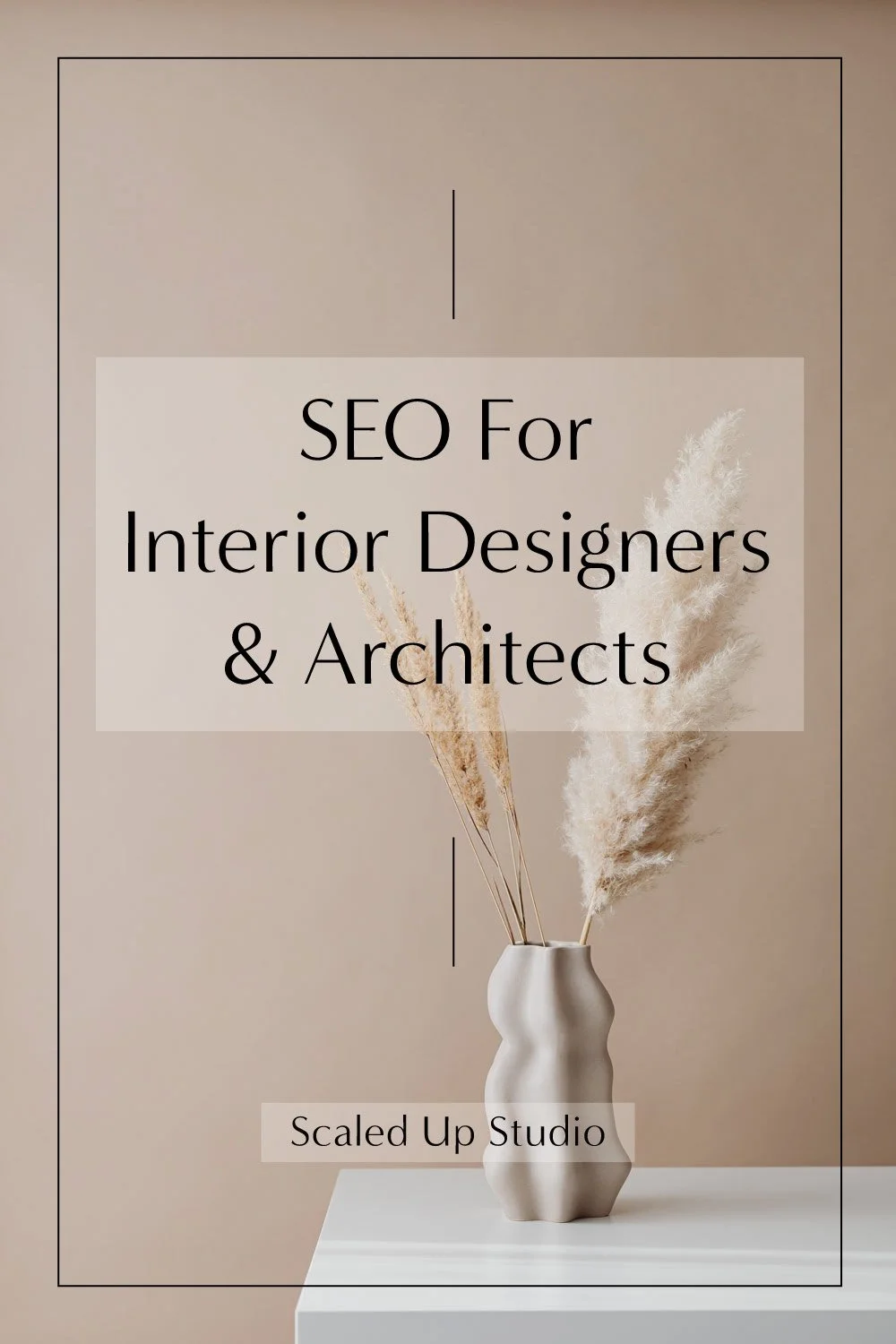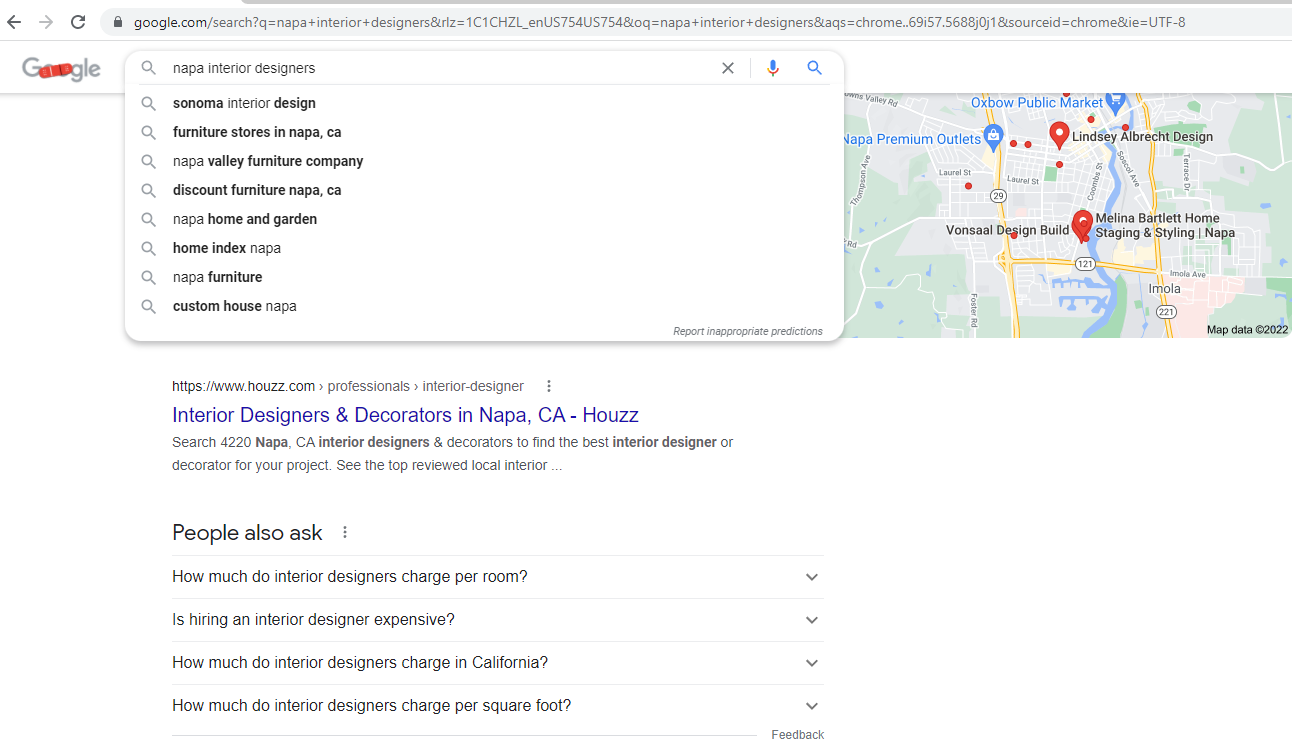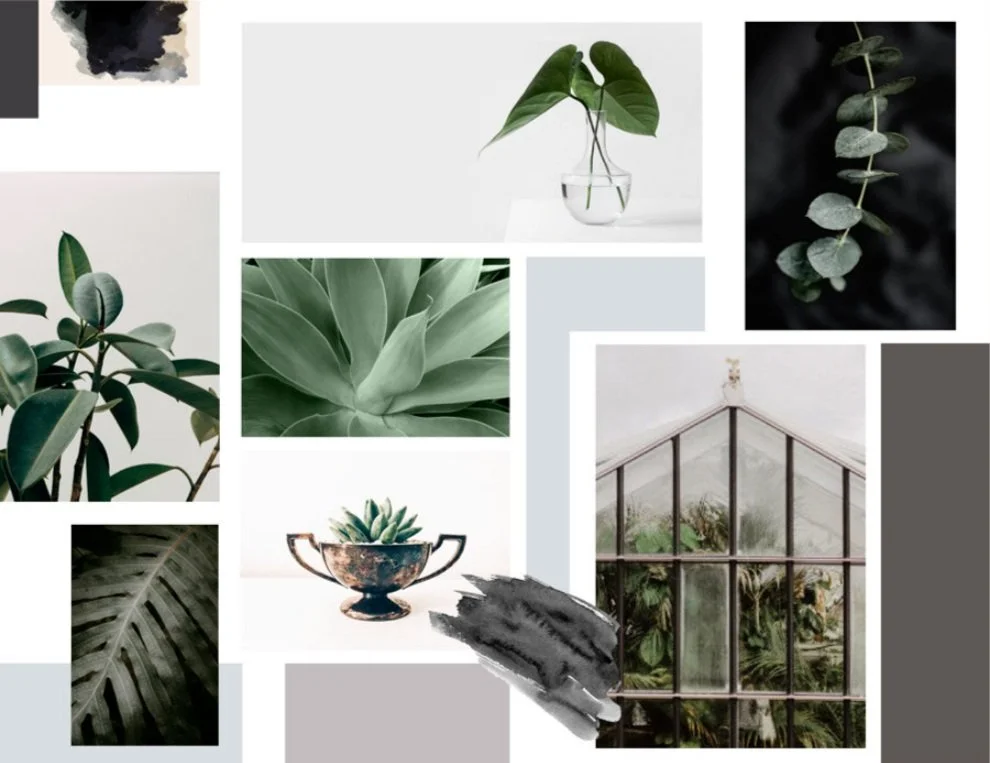SEO for Interior Designers and Architects [10 Quick Wins]
SEO for designers and architects isn’t different from how other businesses use it to rank higher on Google search, but honestly, many designers need it more than other businesses.
Why?
Because designer and architectural websites are usually image heavy and text light.
“Let the work speak for itself” is how many designers approach their websites. This makes sense visually but it doesn’t work for SEO. Google doesn’t read images (yet), only words.
In other words, letting the work speak for itself is great AFTER visitors have landed on your site, but first you have to get them there so they get to see all that beautiful work.
This means you have to understand SEO so you know what steps to take to increase your traffic. If you don’t, lead generation will be a lot more challenging.
It’s not your first choice of tasks to tackle, I get it. It’s quite possible you’d rather donate a kidney. 😉
After all, you’re a designer, not a digital marketer. However, quality website traffic is one of the core components for lead generation (aka getting clients).
So SEO isn’t different for designers, I just address it from a designer’s perspective. Read on to learn about SEO for your design business website.
Table Of Contents - How Designers Can Rank Higher In Google Search
What Is SEO?
Search Engine Optimization (SEO) is a set of practices designed to improve a website’s rankings and visibility when people search for services or products related to that search in Google, Bing, and other search engines. According to SEO expert Neil Patel, “SEO is the process of taking steps to help a website or piece of content rank higher on Google.”
This in essence, is the purpose behind SEO. When Google crawls your site, it’s purpose is to determine what your site and pages are about. When someone types in a particular search, Google then offers up the best solution based on the language of that search along with other factors such as location, past search history, etc.
So a search for “best leather sofa” will yield different results than “best pet resistant sofa” or just “best sofa.”
More to the point, a search for “Napa interior designer” will yield different results from “Napa kitchen and bath designer.” Who appears and in what ranking for these searches is determined by SEO.
Keywords & Keyword Optimizing
Keywords are the words and phrases that people type into search engines to find what they're looking for.
Before you can do anything SEO related, you first must define what keywords you want your website to rank for.
Your keywords are words that your ICA (Ideal Client Avatar) would use to search for the services you offer.
Examples:
(insert city) interior designers
Kitchen remodeling (insert city)
Custom drapes near me (you don’t use “near me” as a keyword - but understand that ranking for your location is important.)
It’s important to use the words/phrases your ideal clients would use. So avoid jargony, industry-specific or technical terms unless you’re trying to get the attention of other industry insiders. E.g. “drapes” vs. “window treatments” although Google is way better at aligning synonyms too these days.
The better you’re able to rank for keywords that align with your ideal clients’ searches, the more quality traffic your website will get.
This is SEO in a nutshell.
Free Tools For Keyword Research
There are some great free resources for keyword research: One of the best is Google search itself.
Google search - drop down list + “people also ask”
Type in your search, hit return, then click inside the search bar itself to display a drop-down list of related searches. “People also ask” shows related searches but isn’t appearing as often as it used to.
This screenshot shows my search for “Napa interior designers” and the drop-down list of related searches. It also shows “People also ask” showing more related searches, however “People also ask” began not showing in search as often during mid-summer 2021.
Pinterest for interior design keyword search ideas
Pinterest is a search engine and not social media. Similarly to Google search, check the drop down list after entering a search for a list of related searches people have performed.
Google Trends
Google Trends shows how many searches there are for a specific keyword within a set timeframe. It’s especially helpful because you can compare different keywords.
I use Google trends for more general, macro searches. It also provides some geographical data and related search terms.
Using Google Search, I’ve compared the keywords “interior designer,” “architect,” and “stager” to compare how frequently those terms are searched in the US. Google search allows you to discover the number of searches in a given time frame, compare keywords, and also provides some geographical data and related search terms info.
Ubersuggest
Ubersuggest is a paid SEO tool that has a free version allowing you to do keyword discovery, domain overview, competitive analysis, content ideas and more.
[Need help drilling down on who exactly you want to work with? Get my 10 page workbook dedicated to defining your Ideal Client Avatar:]
Longtail Keywords And Why They’re Important
A long tail keyword is a phrase that is generally made from three to five words. Since these keywords are more specific than generic phrases, they allow you to target niche demographics.
Because they’re more specific, longtail keywords are less competitive than generic keywords, which is good news for all of us. By creating content that incorporates longtail keywords, you have a better chance of ranking in search for those keywords.
This will attract high-quality traffic to your website which is more likely to lead to conversions. (A conversion is when visitor to your website completes a desired goal such as booking a discovery call, joining your newsletter, or making a purchase.)
A search for “New Orleans interior designer” is longtail while a search for “interior designer” is generic. The former is a whole lot easier to rank for than the latter, right?
So when creating your content, you want to aim for a handful of longtail keywords relevant to your business.
SEO Strategies for Designers, Architects, & Home Design Professionals
Now that we’ve defined basic SEO terms, let’s get into how we can implement SEO on a design business website.
Write A Clear Homepage Headline
Your homepage is often the first page visitors will see, and you know the saying - you only get one chance to make a first impression. So your homepage needs to clearly state who you are and what you’re about.
Google is trying to replicate a user experience as best it can through it’s crawling. Google assumes that if it can’t understand exactly what you do, then site visitors will also be confused.
If search engines are able to understand what your particular design business is all about, then you will be rewarded by being more easily discoverable when your ICA (ideal client avatar/community) searches for you.
So if you specialize in kitchens and baths, make that clear. If your passion is historic home renovation, make it clear. Do not rely on just your imagery to do that job for you (more on imagery below.)
Help Google help you!
In other words, whether it’s your website or your social profiles, you need to immediately communicate your brand message. Otherwise, visitors might be confused about what services you offer. (Hint, your headline should include some of your longtail keywords.)
Header Hierarchy & Keywords
Search engines assign your website headers (titles and headlines) a hierarchy. Visually, they’re usually largest to smallest, and search engines prioritize them the same way:
Search engines give the most weight to Title Tags, then H1 headers, then H2 headers, H3 headers, etc. down the line.
A tag in html is basically formatting that provides the directions for visual content you see on the web. If using Squarespace, you don’t have to deal with the actual tag itself, but just for reference, the underlying html for a title would be written as <title>THIS IS MY TITLE</title>
H1 - SEO For Interior Designers
H2 - SEO For Interior Designers
H3 - SEO For Interior Designers
H4 - SEO For Interior Designers
Paragraph 1 - SEO For Interior Designers
Paragraph 2 - SEO For Interior Designers
Paragraph 3 - SEO For Interior Designers
HEADING BEST PRACTICES:
Include the page’s primary keyword in your headings
Don’t “keyword stuff” your headers. Keyword stuffing is using your keywords excessively for SEO purposes. Web crawlers can pick up on this if done a lot over time and penalize a site for it.
Optimizing Imagery For SEO
Optimized imagery is key for a designer’s website. Why? A defining characteristic of many design-industry websites is they’re image heavy and text light.
“Let the images speak for themselves” makes sense aesthetically but not from an SEO stand point.
Think about it: the whole point of SEO is to get people on your site to begin with. Only then can they admire your body of work and want to hire you. You can have the most beautifully designed portfolio and website, but without good SEO, few are going to see it.
So how are you going to get eyeballs on your site to see your portfolio if you have lots of imagery and not much text for search ranking? Well, it just so happens there are strategies for making those images “speak for themselves.”
IMAGE OPTIMIZATION BEST PRACTICES:
image file name - Use keywords in the image file name. Don’t leave your file name as a jumble of random letters and numbers.
image description - Add information and context to your images so web crawlers better understand your image and therefore your page topic. Image descriptions should include relevant keywords.
image alt text - The main purpose of alt text is to improve accessibility by enabling screen readers to read out the alt text for visually impaired users. Be descriptive and helpful. How would you describe this image to someone who couldn't see it?
image file size - Bloated file sizes cause pages to load slower. This creates a poor user experience and Google will penalize your page for it. Ensure file sizes are small - aim for 500 kb max.
Image optimization - name your files, state what the image is about in the caption, and describe the image in the alt text. From Building Your Brand With A Mood Board
Don’t neglect optimizing your images! In addition to helping your overall SEO, the images themselves can rank in search. One third of all Google searches are for an image. (Moz via Hubspot).
I can attest. When I do an image search for “interior design mood board” my own images show up from my Greenhouse Studio post on Creating An Interior Design Mood Board. That’s because I made darn sure they’re well optimized!
Blogging
Want more visitors to your website? Yes! We all do. What’s one of the very best ways to do it? Blogging! Blogging drives traffic to your website.
By providing fresh, quality content, you’re giving Google and any search engine new content to index. If Google thinks you’re publishing new content regularly, it will index your site more often than a site that’s rarely updated. This is a good thing.
Blog posts are one of the most effective ways to be seen by a search engine. By providing fresh, quality content, you’re giving Google and any search engine new content to index. Your new content that’s being indexed regularly creates more opportunities to rank for keywords important to your business. This will drive more traffic.
Want to know more about the benefits of blogging for your design business? I do the deep dive in these blogging posts:
Why Blogging Is Important For Designers & Architects
Write Your First Blog Post (The Right Way)
They are part of my 10 post series on DIYing an interior design website - checkout the first post here.
Backlinks
An added SEO benefit of writing a quality blog post is that it can generate backlinks for your site.
Backlinks are a link from someone else’s site to your own. Backlinks occur when someone thinks so highly of your content they link it to content of their own as a reference.
For example, when I write posts like Best Indoor Plants For Beginners on my home and garden blog, I link to research produced by university horticulture departments with scientific data about how best to grow them or other pertinent information. I do not reference another house plant blog post that appears to have just regurgitated content from yet another house plant blog post.
[BTW - by me linking to my post above rather than just typing the title, I’ve created another backlink for Greenhouse Studio. Like how I did that?]
If you write quality blog posts, you will find that sometimes people will link to your post as a reference. Backlinks serve as a vote of confidence about your content from other websites and sends a positive signal to Google about the quality of your work.
Having backlinks from other quality sites improves your own SEO ranking. Backlinks are a critical factor in search engine optimization. However, generating organic backlinks is one of the most challenging parts of SEO. So by writing quality blog posts, you increase your opportunity for getting those important backlinks.
Internal Links
Internal links are links in your post that lead to other related content on your site. They can help boost your ranking since they help Google to understand that your content is intertwined and related - one part of a larger body of work. Internal links help Google to understand what your site is about which can boost the content's value, improving your ranking.
Just like the backlink example above, you probably noticed that I’ve linked to a few of my own Scaled Up Studio posts within this post. I’m trying to create the best user experience by providing additional information on a related subject. Hopefully Google will also index the internal links and recognize this as added value.
URL Slugs
What the heck’s a URL slug? (It’s not a garden pest!) A URL slug is the exact address of a specific page or collection item on your website.
Your URL is your unique website page address. For example, the URL for this page is: scaledupstudio.com/blog/seo-interior-designers-architects
The slug is the part that changes depending on what page you’re on, and it always follows your domain.
My domain is: scaledupstudio.com
The slug is: seo-interior-designers-architects
Your slugs factor into SEO. They aren’t a major component, but we want to optimize all we can.
Slugs should be both short and descriptive. 3-5 keywords for your blog post URL Slug is a best practice. Although I’ve noticed some SEO experts will type out a near replica of a hypothetical search query as their slug.
For primary pages (About, Services etc) I don’t usually insert keywords into the slugs to keep them concise.
SEO For Designers & Architects: Conclusion
Bill Gates once famously said “Content is king” and he was right. Why? Because Google rewards websites and pages that make a searcher happy when they find the result that satisfies their search needs.
I prefer my version though which is “Quality content is queen.” :)
SEO takes time and patience.
Implement these SEO strategies
Create quality content relevant to your business and allow it to marinate. Continue to create more content.
Eventually you will see results: more traffic and higher quality traffic coming to your design/architectural website.
New to Squarespace? You can sign up for a free trial, and I can even get you a discount! Use code GREENHOUSE10 to save 10% off your first year.
Check out these other helpful business-building posts:
Don’t forget to Pin it for later!
If you have any questions or comments, please drop me a note below. Be sure to check back for my response (I always respond) since no notification is sent.






